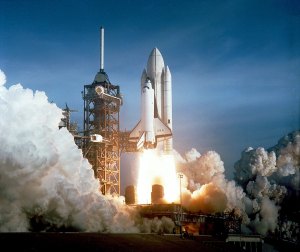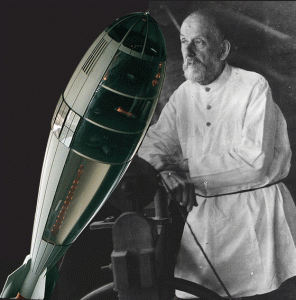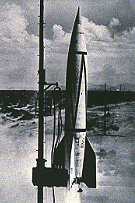When most people think of a rocket, they think of a tall round vehicle that flies into space. But the word “rocket” can mean two different things. The word can describe a type of engine. The word rocket also is used to talk about a vehicle that uses a rocket engine.
To justify it,Like many other engines, a rocket produces thrust by burning fuel. Most rocket engines turn the fuel into hot gas. Pushing the gas out of the back of the engine makes the rocket move forward.
Rocket engines are fundamentally different. Rocket engines are reaction engines. The basic principle driving a rocket engine is the famous Newtonian principle that “to every action there is an equal and opposite reaction.” A rocket engine is throwing mass in one direction and benefiting from the reaction that occurs in the other direction as a result.
There are two main types of rocket engines.
Some rockets use liquid fuel. The main engines on the space shuttle orbiter use liquid fuel. Other rockets use solid fuels. On the side of the space shuttle are two white solid rocket boosters. They use solid fuels. Fireworks and model rockets also fly using solid fuels.
By this we got an idea how actually a rocket looks like..what is the actual process involved in starting up a vehicle(rocket).
Evolution of Rocket The first known rockets were used in China in the 1200s. These solid rockets were used for fireworks. They also were used by armies for war. In the 1300s, these rockets were used for the same purposes through much of Asia and Europe. In the next 600 years, people developed bigger and better solid rockets. Many of these were used by the military.
Robert Goddard built the first liquid-fuel rocket
During the 19th century, rocket enthusiasts and inventors began to appear in almost every country. Some people thought these early rocket pioneers were geniuses, and others thought they were crazy. Claude Ruggieri, an Italian living in Paris, apparently rocketed small animals into space as early as 1806. The payloads were recovered by parachute.
By the end of the 19th century, soldiers, sailors, practical and not so practical inventors had developed a stake in rocketry. Skillful theorists, like Konstantian Tsiolkovsky in Russia, were examining the fundamental scientific theories behind rocketry. They were beginning to consider the possibility of space travel. Four persons were particularly significant in the transition from the small rockets of the 19th century to the colossi of the space age: Konstantian Tsiolkovsky in Russia,Robert Goddard in the United States, and Hermann Oberth and Wernher von Braun in Germany.
When was the first rocket launched into space?
The first rocket which could fly high enough to get into space was the V2 missile which was first launched by Germany in 1942. The first rocket which actually launched something into space was used to launch Sputnik, the first satellite, on October 4, 1957. The rocket that launched Sputnik was a R-7 ICBM rocket.
V-2 Rocket
By taking these experiments as a base,NASA scientists with their enormous work developed a rocket called Saturn V that took men to the moon.This is a multi-staged rocket consisting of three stages with their own fuel and engine.
Stage I (SI-C) held five rocket engines that used liquid oxygen and kerosene to produce a total of 7.5 million pounds of thrust. When the Saturn V reached an altitude of about 36 miles i.e.,57.9 km, traveling at 2,752 meters per second, the explosive bolts that connected the SI-C to the rocket were detonated, and SI-C fell into the Atlantic Ocean.
The stage II (S-II) engines, with their 1,125,000 pounds of thrust, accelerated the vehicle to 6,932 meters per second, and at the height of 101 miles (1,562.5 km), explosive bolts again detonated, causing the S-II to be jettisoned(discarded).
The stage III (S-IVB) single J-2 rocket engine provided 225,000 pounds of thrust, While the spacecraft orbited the Earth a few times, the engine shut down. When the spacecraft was aligned with the moon, the engine reignited and pushed the Apollo toward our silvery satellite. The S-IVB was then discarded.
While launching a rocket, we observed that even though the rocket is aligned perpendicularly,after reaching certain height it will take a direction. Rocket will turn to east while it is launching and moving into orbit. Because the Earth rotates to the east, the rotational velocity of the planet itself gives the rocket a natural boost of energy.As any physicist can tell you, a significant amount of energy is needed to boost that kind of weight into space and then on its intended trajectory.
No Indian has yet stepped on Moon. However, Rakesh Sharma, was the first indian in space, courtesy Russian spaceship in 1984. From the spaceship, he recited Iqbal’s poem – Sare Jahan se achcha, Hindustan hamara – to then PM Indira Gandhi, when she asked, how does the earth look from space. He now lives in Bangalore working with ISRO.However, there is the name of our country in the lunar exploration as it has sent its first lunar probe to the moon. This probe is CHANDRAYAAN – I. It landed on the moon on 14th November, 2008. But there are future plans on the stepping of the first Indian on the moon with the help of the chandrayaan “sequel” CHANDRAYAAN – II around the year 2030. So you’ll have to wait to see and know the first Indian to step the moon. Till then, keep your fingers crossed!!!!



